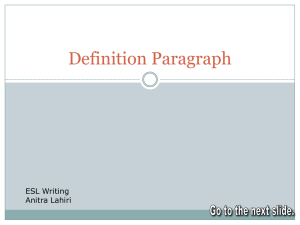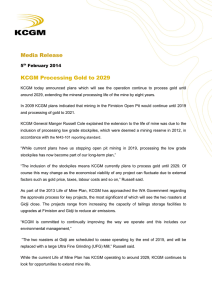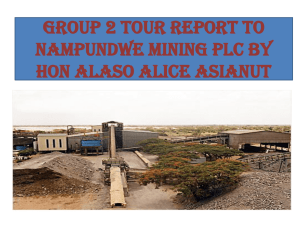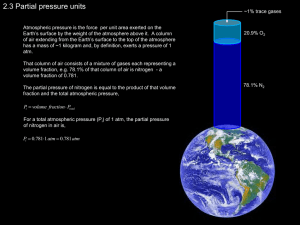Maree SAIMM 2011 09 15 B
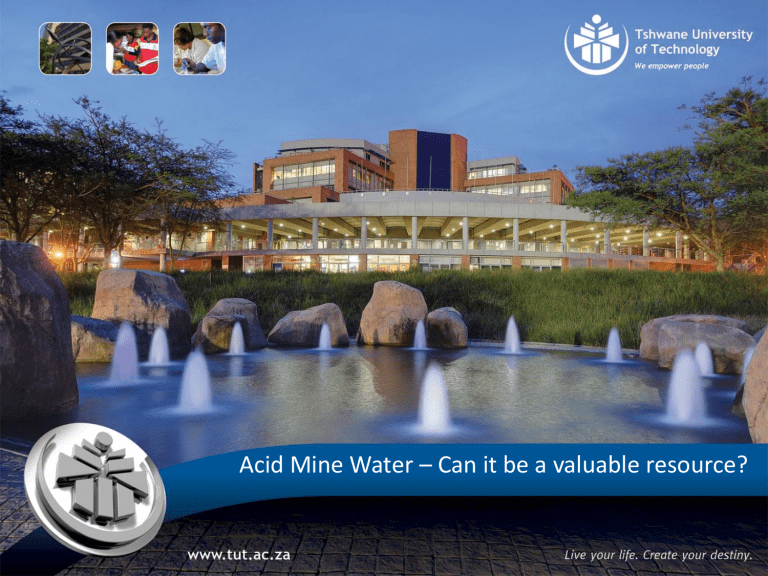
Acid Mine Water – Can it be a valuable resource?
Waterfall, Witwatersrand National Botanical Gardens
The farm where gold was first discovered in
1886 by that an Australian gold miner, George Harrison
SA mineral reserves and production (% of World)
(from: DME, South Africa’s mineral industry 2006/2007)
Commodity
Platinum
Vanadium
Zirconium
Ferro-chromium
Vermiculite
Chrome ore
Alumino-silicates
Titanium minerals
Manganese ore
Gold
Ferro-Mn/Fe-Si-Mn
Fluorspar
Coal
Reserves
87.7 (1)
31.0 (1)
19.4 (2)
-
38.9 (2)
72.4 (1)
-
18.3 (2)
80.0 (1)
40.1 (1)
16.7 (2)
6.1 (8)
Productio n
59.3 (1)
48.0 (1)
41.6 (2)
40.5 (1)
39.6 (1)
38.7 (1)
36.4 (1)
19.8 (2)
13.3 (2)
11.1 (1)
6.0 (4)
5.0 (4)
4.5 (5)
Water quality of gold mines in Gauteng
Parameter
Flow
Flow pH
Free acidity
Iron(III)
Aluminium
Total acidity
Iron(II)
Total/Free acidity
Alkalinity
Sulphate
Calcium
Magnesium
Manganese
Zinc
Cobalt
Nickel
Copper
Uranium
Silicon
Barium
Chloride
Sodium
Potassium
TDS
(Ml/d)
(m3/h)
(mg/l as CaCO3)
(mg/l as Fe)
(mg/l as Al)
(mg/l as CaCO3)
(mg/l as Fe)
(mg/l as CaCO3)
(mg/l as SO4)
(mg/l as Ca)
(mg/l as Mg)
(mg/l as Mn)
(mg/l as Zn)
(mg/l as Co)
(mg/l as Ni)
(mg/l Cu)
(mg/l U)
(mg/l Si)
(mg/l Ba)
(mg/l as Cl)
(mg/l as Na)
(mg/l as K)
(mg/l)
Western basin
Eastern basin
147
228
11.9
4.55
18
21
0.465
11
0.2
37.03
50
Rand
Uranium Grootvlei
IRB
20
833
108
4500
8
700
100
6.4
2 437
800
0.29
0
4800
528
183
102
0.00
350
1075
216
128
2
0
0
0
157
202
6 777.1
2 092.0
Central basin
ERPM
60
2500
3.5
300
1 749
3
800
0.17
4096
582
250
15
4
1.5
5
180
104
14
6 060.6
Decant water from gold mines in Gauteng
Basin
Far Western
Western
Central
Eastern
Total for
Gauteng gold mines
Mpumalanga coal mines
Flow rate
(Ml/day)
65
60
100
120+
345+
80+
Limited area
Question
Can we deal with this problem in a cost-effective way?
Neutralized mine water
CONSEQUENCES OF OVERFLOWING
Pyrite (FeS
2
) or “Fool’s Gold” remains stable when deep underground ..
... but if exposed to 0
² and H
²
0
(through decanting) it decomposes and forms Acid
Mine Drainage (AMD)
Environmental Critical Level is approximately 23m below water level – lowest natural spring
10
National Water Act of 1998
Key Principles
• Decentralization
• Equitable access
• Efficiency
• Sustainability
Key instruments:
• Polluter pays principle
• Mine closure certificate
Harmony emergency measures
Directives and apportionment (2006)
Randfontein Estates Gold
Mine (Harmony 46%)
West Witwatersrand Gold Mine
(DRD 44%)
Mogale Gold Mine (Mintails
0.8%)
Co-operation agreement between
Mintails and DRD
Heads of Agreement between
Harmony, DRD and Mintails
12
What is mine water?
What is mine water not?
Components of AMD
4FeS
2
+ 14O
2
+ 4H
2
O 4FeSO
4
+ 4H
2
SO
4
1. Free acid: H
2
SO
4 already partially neutralized
2. Fe(II) acid: Cannot react with limestone/dolomite
3. Low concentrations of heavy metals
4. Salt (Ca, SO
4
)
How does AMD form?
1 . Dissolution of limestone/dolomite
CaCO
3
+ H
2
O Ca 2+ + HCO
3
+ H +
2. Pyrites oxidation as a result of ingress water running through broken rock;
4FeS
2
+ 14O
2
+ 4H
2
O 4FeSO
4
+ 4H
2
SO
4
3. Neutralization (natural attenuation)
H
2
SO
4
+ CaCO
3
CaSO
4
+ CO
2
+ H
2
O
4. Reciprocating contact of pyrites-rich ore with water and oxygen as the water level fluctuates from water being pumped out at a constant rate while the incoming water flow-rate fluctuates with seasonal rainfall.
Water quality of gold mines in Gauteng
Parameter
Flow
Flow pH
Free acidity
Iron(III)
Aluminium
Total acidity
Iron(II)
Total/Free acidity
Alkalinity
Sulphate
Calcium
Magnesium
Manganese
Zinc
Cobalt
Nickel
Copper
Uranium
Silicon
Barium
Chloride
Sodium
Potassium
TDS
(Ml/d)
(m3/h)
(mg/l as CaCO3)
(mg/l as Fe)
(mg/l as Al)
(mg/l as CaCO3)
(mg/l as Fe)
(mg/l as CaCO3)
(mg/l as SO4)
(mg/l as Ca)
(mg/l as Mg)
(mg/l as Mn)
(mg/l as Zn)
(mg/l as Co)
(mg/l as Ni)
(mg/l Cu)
(mg/l U)
(mg/l Si)
(mg/l Ba)
(mg/l as Cl)
(mg/l as Na)
(mg/l as K)
(mg/l)
Western basin
Eastern basin
147
228
11.9
4.55
18
21
0.465
11
0.2
37.03
50
Rand
Uranium Grootvlei
IRB
20
833
108
4500
8
700
100
6.4
2 437
800
0.29
0
4800
528
183
102
0.00
350
1075
216
128
2
0
0
0
157
202
6 777.1
2 092.0
Central basin
ERPM
60
2500
3.5
300
1 749
3
800
0.17
4096
582
250
15
4
1.5
5
180
104
14
6 060.6
Volume of mine water under Johannesburg
• Kariba Lake = 185 km 3 or 185 000 000 Ml
Parameter
Depth (m)
Rise rate (m/d)
Time before decant (d)
Time before decant (years)
Void volume (Ml)
Mine depte (m)
Total void volume (Ml)
Total void volume (Ml)
Cariba lake (Ml)
AMD/Cariba Lake (%)
Basin
Eastern
700
0.42
1 667
Central
500
0.61
821
4.57
180 000
3 000
771 429
2.25
49 260
3 000
295 560
1 066 989
185 000 000
0.58
Battery acid
Mass fraction
H
2
SO
4
Density
(kg/L)
Concentration
(mol/L)
10% 1.07
~1
Common name dilute sulfuric acid
29–32%
62–70%
78–80%
1.25–1.28
4.2–5 battery acid
(used in lead–acid batteries )
1.52–1.60
9.6–11.5
chamber acid fertilizer acid
1.70–1.73
13.5–14
tower acid
Glover acid
1.83
~18 concentrated sulfuric acid 95–98%
Acid
Eastern Basin
Western Basin
Central Basin
Battery Acid
Gas cool drink
Acidity (mg/l CaCO3)
50
1800
1500
450 000
800
Game Reserve put at risk
Four point plan
1. Encourage mining activities to stimulate job creation (reduced labour cost, beneficiation of raw materials). The pumping and treatment cost should be offset by the value of the mined minerals, the treated water, and dissolved by-products reclaimed from the mine water.
2. Immediate implementation of:
– limestone neutralization for removal of free acid, iron(II) and partial desalination.
– lime treatment for removal of toxic heavy metals and radioactivity,
– In the case of Grootvlei Mine, water is already neutralized due to natural attenuation - Passive treatment
3. Implement desalination to meet water demand by 2014. Selected technology based on capital and running costs, performance, process stability.
4. Pumping or not



